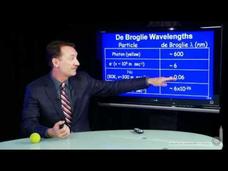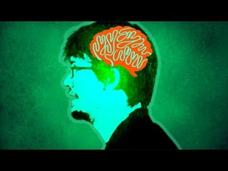Berkeley University of California
Electromagnetic Spectrum
Light waves are not equal. The video introduces the electromagnetic spectrum and describes the progression of the wavelength. It also highlights the visible light spectrum.
Berkeley University of California
De Broglie Wavelengths
You learned in the previous lesson in this series that a particle with momentum has the properties of a wave. So how about a baseball? The lesson calculates the wavelengths of different particles given their momentum (mass and velocity),...
Berkeley University of California
Hydrogen Atom as a Particle in a Box (NB)
How does an electron qualify as a particle in a box? It behaves like a wave and, when bound to an atom, has boundaries. Using this notion, the professor explains a quantum mechanical calculation for a hydrogen atom. Given the length of...
Be Smart
Making Music From Space!
We know that sound cannot be heard in space, but can space make sound? Artists use various techniques to turn radiation waves, the earth's magnetic field, and other scientific data into music. This is the 20th video in a series of 22.
Crash Course
The Electron
Electrons don't really exist as particles in an atom, but more as waves which move at different frequencies. Explore electron configurations through learning about their shells and orbitals and how this relates to the periodicity of the...
SciShow
Mind Reading
The average number of thoughts the human brain has every day is around 70,000. This video explores how scientists use MRIs to read people's thoughts by analyzing brain waves and decoding them into images. Application would be for people...
MinutePhysics
Why is the Sun Yellow and the Sky Blue?
Air is clear, so why do we see the sky as blue? The video explains the way light waves travel through the air and the result of our perceptions. It uses simple diagrams and illustrations to reinforce the variety of colors present versus...
Deep Look
You're Not Hallucinating. That's Just Squid Skin.
Cephalopods, including squid, use their color-changing skin for both camouflage and communication. A video explains how squid camouflage themselves in the open ocean with nothing else around. It shows how they mimic the interplay of...
FuseSchool
Intro to Cells: Animal, Plant, Nerve and Red Blood Cells
Throw your dendrites in the air and wave 'em like you just don't care! An excellent video in the Fuse School playlist explains the parts and functions of cells. It describes their structures, functions, and specialties.
Crash Course
Geometric Optics: Crash Course Physics #38
Light can be a mysterious phenomenon. Take away some of the mystery with an intriguing video lesson. The 38th lesson of the Crash Course physics series studies the movement of light waves. Topics include refraction and reflection as well...
Physics Girl
How to Control Light with Water
Can you bend light waves using water? Physics Girl demonstrates this phenomenon and explains how it happens as part of her larger series. She then details the applications and even explains how the Internet works.
Geography Now
Geography Now! Montenegro
Montenegro has a laid-back reputation. However, as seen an insightful video resource, its history includes fierce fighting against waves of invaders throughout the centuries. With more Italian influence than other Balkan countries, it's...
National Woman's History Museum
Women's History Minute: Grace Hopper
Navy WAVE, Rear Admiral, developer of the Mark 1, an early electronic computer. Grace Hopper is the subject of a short Women's History Minute that introduces viewers to this amazing electronics pioneer.
PBS
Electromagnetic Spectrum | UNC-TV Science
Illuminate lightwaves, even those not visible to the human eye, in a concise activity about the electromagnetic spectrum. Pupils watch and listen to an animated video describing the electromagnetic spectrum as well as frequency and...















